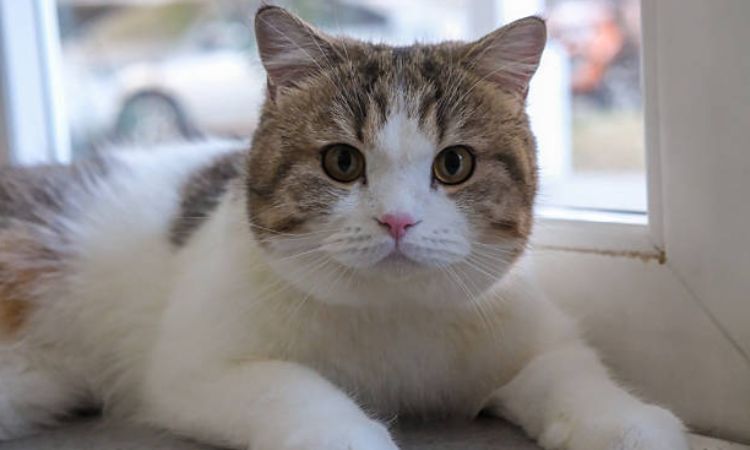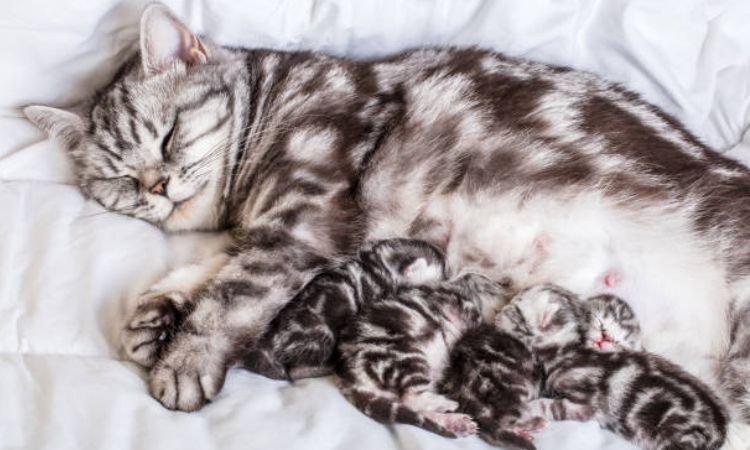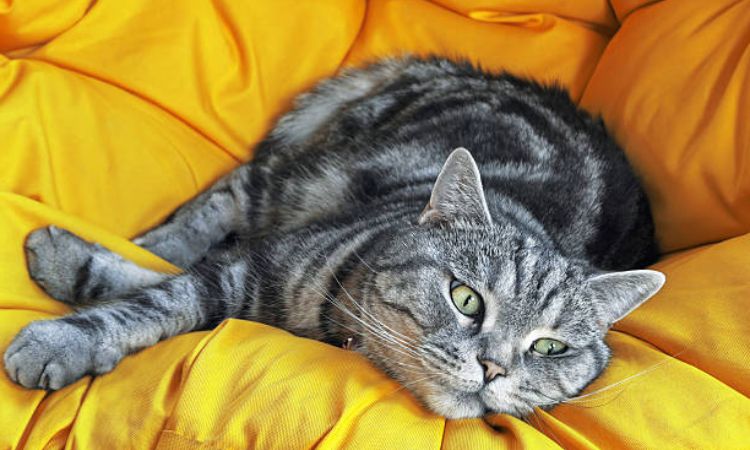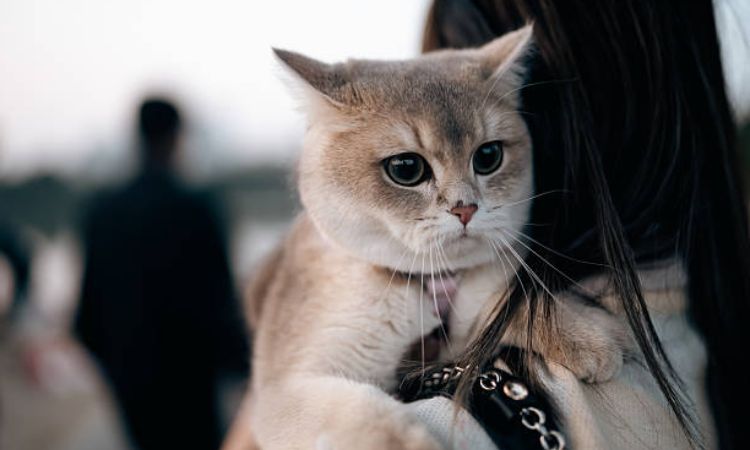With their round faces, plush coats, and gentle temperament, British Shorthair Tabby Cats are often described as living teddy bears with a regal twist. Beloved for their striking tabby patterns and calm, affectionate nature, these cats strike the perfect balance between independence and companionship.
Whether you’re curious about their personality, coat colors, or how to best care for them, this guide will walk you through everything you need to know about welcoming a British Shorthair Tabby into your home.
Personality and Temperament
The British Shorthair Tabby Cat is widely loved not only for its charming striped coat but also for its delightful personality. Known for being calm, affectionate, and easygoing, this breed adapts well to a variety of households, making it an ideal companion for first-time cat owners and experienced feline lovers alike.

When it comes to family life, British Shorthair tabbies are wonderfully tolerant and patient. They usually get along well with children, showing affection without being overly demanding. Their steady temperament also makes them good companions for multi-pet households, including homes with dogs, as long as introductions are handled gradually.
Unlike high-energy breeds such as Bengals or Abyssinians, the British Shorthair tabby has a more independent nature. They are content spending time alone and don’t require constant attention, though they still appreciate regular interaction and companionship.
In terms of intelligence and playfulness, these cats strike a nice balance. They enjoy puzzle toys, interactive games, and short bursts of playtime, but they’re not hyperactive. Instead, they bring joy through their gentle presence, occasional playful antics, and steady loyalty to their human companions.
Coat Colors and Tabby Patterns
One of the most striking features of the British Shorthair Tabby Cat is its variety of coat colors and patterns. The tabby markings highlight the breed’s plush, dense fur, creating a charming look that ranges from bold swirls to delicate stripes. These cats come in several distinct tabby variations, each with its own unique appearance.
- Classic Tabby: Also called the “blotched tabby,” this pattern displays bold, swirling markings on the sides, often forming a bullseye shape. It gives the British Shorthair a dramatic, marbled look.
- Mackerel Tabby: Recognized by its narrow, vertical stripes that resemble a fish skeleton, this is one of the most common tabby patterns. The stripes run parallel along the body, giving the cat a sleek, striped coat.
- Spotted Tabby: Instead of stripes or swirls, the coat features distinct spots scattered across the sides and back. Some spots are round, while others may appear more oval or broken stripes.
- Ticked Tabby: Subtle and elegant, this variation lacks distinct stripes or spots. Instead, each hair is banded with alternating colors, creating a “salt-and-pepper” or sandy look. This gives the British Shorthair a softer, shimmery coat.
In addition to patterns, the color palette for British Shorthair tabbies is impressively wide. Common shades include silver, blue, brown, cream, black, and lilac, though more unusual hues can also appear. Silver tabbies are especially popular, with their bright contrast and striking appearance, while blue and lilac tabbies offer a softer, pastel-like charm.
The genetics behind these coats play a crucial role in shaping both shade and pattern. The tabby gene (agouti gene) determines whether the coat displays the characteristic striping or spotting, while modifier genes influence the intensity of color, the clarity of markings, and the final shade. Breeding programs carefully select these traits to produce the wide variety of stunning tabby British Shorthairs admired today.

Lifespan and Health
Average Lifespan
The British Shorthair Tabby Cat is widely admired not only for its plush coat and charming looks but also for its robust health and long life expectancy. On average, these cats live between 12 and 15 years, though many well-cared-for individuals reach their late teens, and some have even been known to live into their early twenties. Indoor cats with attentive care and a stable lifestyle generally outlive outdoor cats, thanks to reduced risks of disease and accidents.
Common Health Concerns
Although British Shorthair tabbies are considered a hardy breed, they are still prone to certain health issues that owners should be aware of:
- Obesity – Their calm and easygoing nature makes them less active than many breeds, which increases the risk of weight gain. Obesity can lead to diabetes, joint strain, and heart disease.
- Hypertrophic Cardiomyopathy (HCM) – A genetic heart condition that thickens the heart muscle, more commonly seen in males. Regular screenings can help detect it early.
- Dental Issues – Gingivitis and periodontal disease are frequent concerns in this breed. Left untreated, these conditions can cause pain, difficulty eating, weight loss, and even secondary infections.
Importance of Vet Check-Ups and Vaccinations
Routine veterinary visits are essential to maintaining your British Shorthair’s long-term health. Annual or bi-annual check-ups allow vets to catch early signs of heart disease, kidney problems, or other age-related conditions. Keeping vaccinations up to date protects them from common feline illnesses such as rabies, feline leukemia virus (FeLV), and calicivirus. Preventive care, including parasite control, also helps ensure your cat’s well-being at every life stage.
Tips for Keeping Them Healthy and Active
To give your British Shorthair tabby the best chance at a long, happy life:
- Feed a high-quality, protein-rich diet with minimal fillers and carbohydrates to maintain a healthy weight.
- Encourage daily play sessions with interactive toys, scratching posts, or climbing trees to keep them mentally and physically active.
- Provide a safe environment, preferably indoors or in a secure catio, to reduce exposure to accidents, parasites, and infectious diseases.
- Maintain good grooming and hygiene, including weekly brushing, nail trimming, and regular dental care.
- Offer a stable routine and companionship, as this breed thrives on predictability and gentle social interaction.

Grooming and Care Guide
Coat Grooming Needs
Although British Shorthairs have short to medium-length fur, their dense double coat requires regular grooming to prevent shedding and matting.
- Frequency: Brush at least once a week, increasing to 2–3 times during seasonal shedding (spring and autumn).
- Tools: Use a slicker brush, rubber grooming mitt, or comb to lift loose undercoat hair and prevent tangles.
- Benefits: Regular brushing:
- Reduces hairballs
- Minimizes shedding around the home
- Promotes healthy skin and circulation
- Tip: Brush in the direction of hair growth and use gentle strokes to make grooming enjoyable for your cat.
Even though British Shorthairs are low-maintenance, skipping grooming can result in a dull coat, increased shedding, and minor skin irritations.
Eye and Ear Care
British Shorthairs generally have clean eyes and ears, but routine care ensures they remain healthy:
- Eyes: Wipe away minor discharge with a soft, damp cloth. Avoid harsh chemicals or excessive rubbing.
- Ears: Check weekly for wax buildup, dirt, or signs of infection. Use a vet-approved ear cleaner and cotton balls—never insert anything deep into the ear canal.
- Signs to Watch: Redness, foul odor, excessive scratching, or watery eyes may indicate infection and require veterinary attention.
Regular monitoring helps prevent minor issues from becoming serious health concerns.
Diet and Nutrition
Maintaining a healthy weight is essential for British Shorthair tabbies, as they are prone to obesity due to their stocky build and love of food.
Recommendations:
- Feed high-quality, protein-rich food, preferably wet or a combination of wet and dry. Aim for 50–60% animal protein and low carbohydrates.
- Measure portions to prevent overeating. Adult cats typically require 2–3 meals per day, while kittens benefit from 4–5 smaller meals.
- Avoid human food, dairy, grains, and fillers that can cause digestive issues.
- Include occasional healthy treats to reward good behavior, but keep them minimal to avoid extra calories.
Hydration: Always provide fresh water, as proper hydration supports kidney and urinary tract health.
Exercise and Enrichment
Despite their calm nature, British Shorthair tabbies need regular physical and mental stimulation to prevent weight gain and boredom.
Activities:
- Interactive play: Laser pointers, feather wands, or toy mice keep your cat active.
- Cat trees and climbing spaces: Encourage natural hunting and climbing behaviors.
- Puzzle feeders and treat-dispensing toys: Stimulate intelligence and provide enrichment.
- Scheduled playtime: Aim for at least 30–60 minutes daily split into short sessions.
Regular exercise not only maintains a healthy weight but also improves mood, reduces stress, and strengthens the bond between cat and owner.

Special Care Considerations
Indoor Living
- British Shorthairs adapt well to indoor life but still need mental and physical stimulation.
- Provide scratching posts, climbing structures, and interactive toys to keep them engaged.
- Indoor cats are less exposed to infections, parasites, or injuries but may require extra enrichment to prevent boredom.
Outdoor Access
- If allowed outside, ensure a safe, supervised environment to minimize risks from traffic, predators, and disease.
- Regularly check for fleas, ticks, and other parasites.
- Vaccinations, flea/tick control, and microchipping are recommended for outdoor cats.
The British Shorthair tabby is a calm, affectionate, and resilient companion, offering both beauty and charm in a sturdy, teddy bear-like package. With proper care—from regular grooming and a balanced diet to mental stimulation and routine vet visits—these cats can thrive for many years, bringing joy and companionship to any household.






